 W
WThe 3rd Armored Cavalry Squadron a battalion-sized unit of the Army of the Republic of Vietnam (ARVN), the South Vietnamese army. It was part of II Corps that oversaw the twelve provinces of the central highlands; corps headquarters being in the mountain town of Pleiku. The 3rd Armored Cav was organized on January 1, 1954.
 W
WV Corps Artillery was a field artillery formation of the United States Army during World War II, Cold War, and War on Terrorism. It was officially inactivated in July 2007 at Tompkins Barracks, Schwetzingen, Germany.
 W
WThe 6th Battalion was an infantry battalion of the Australian Army. Originally formed in 1914 for service during the First World War, the battalion fought at Gallipoli and on the Western Front. The battalion was disbanded in 1919 but was re-raised in 1921 as part of the Citizens Force, and adopted the title of "Royal Melbourne Regiment" in 1935. The battalion did not serve overseas during the Second World War and was eventually disbanded in 1944. It was re-raised in 1948 and remained in existence until 1960 when it was absorbed into the Royal Victoria Regiment. Today its honours and traditions are maintained by the 5th/6th Battalion, Royal Victoria Regiment.
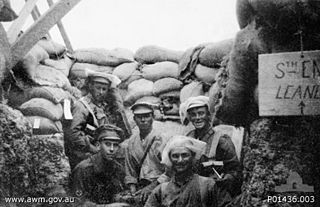 W
WThe 12th Battalion was an infantry battalion originally raised for the First Australian Imperial Force during the First World War. The battalion was recruited from Tasmania, South Australia and Western Australia and formed part of the 3rd Brigade, 1st Division. It served throughout the war, firstly during the Gallipoli Campaign and then on the Western Front. During the interwar years, the 12th Battalion was re-raised as a part-time military unit and during the Second World War undertook garrison duties in Australia, but did not see combat. Today its lineage is perpetuated by the 12th/40th Battalion, Royal Tasmania Regiment, a unit which continues to serve in the Australian Army Reserve.
 W
WThe 13th Field Regiment was an Australian Army artillery regiment. During World War I the unit was formed in early 1916 as the 13th Field Artillery Brigade, and fought as part of the 5th Division in Egypt, the Sinai and on the Western Front. After the war, it was re-raised as a part-time unit based in the state of South Australia. It was redesignated as the 13th Field Regiment during the early years of World War II, and following Japan's entry into the war it was mobilised and later deployed to New Guinea where a detachment fought during the Battle of Buna–Gona in 1942–1943, returning to Australia in late 1943. After the war, the regiment was re-formed in 1948 in South Australia and remained in existence until being disbanded in 1975.
 W
WThe 18th Division was an infantry division in the III Corps of the Army of the Republic of Vietnam (ARVN). The U.S. Military Assistance Command Vietnam considered the 18th as undisciplined and it was well known throughout the ARVN for its "cowboy" reputation. In 1975 the 18th was made famous for its tenacious defense of Xuân Lộc, the last major battle before the Fall of Saigon.
 W
WThe 52nd Ranger Battalion was a ranger battalion of the Army of the Republic of Vietnam (ARVN) during the Vietnam War. To form the battalion, the 347th, 348th, 351st and 352nd independent ranger companies amalgamated in early 1964, at Mỹ Tho. Its commanding officer was Captain Vong Si Dau.
 W
W725 Squadron is a naval aviation squadron of the Royal Australian Navy (RAN) Fleet Air Arm. The squadron was originally created in August 1943 as part of the Fleet Air Arm of the Royal Navy. It initially served as a fleet requirements unit, was rerolled in August 1945 as a target towing unit, then was disbanded in December 1945. In January 1958, the squadron was re-formed, as a fleet requirements and communications unit of the RAN, operating a variety of fixed-wing aircraft. The squadron was redesignated as an anti-submarine warfare training squadron in May 1959, then was decommissioned in May 1961 and absorbed into 724 Squadron. 725 Squadron was recommissioned in November 1962 as an operational anti-submarine helicopter squadron, flying the Westland Wessex. During this commission, the squadron was involved in HMAS Sydney's troop transport voyages, the rescue of personnel following the Melbourne-Voyager collision, and the Operation Navy Help Darwin relief effort post-Cyclone Tracy. The squadron was decommissioned in December 1975. 725 Squadron was commissioned for the fourth time in June 2015, this time as a training unit for MH-60R Seahawk Romeo helicopters: the squadron had been reactivated two years prior as a non-commissioned unit train on and accept into service the Romeos.
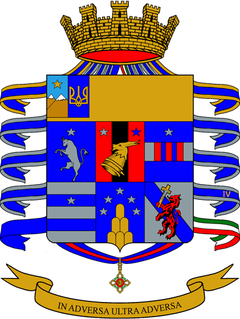 W
WThe 4th Alpini Paratroopers Regiment is a Ranger-type special forces regiment of the Italian Army, specializing in mountain combat. The regiment is one of four regiments of the Army Special Forces Command. The regiment is a unit of the Italian Army's mountain infantry speciality, the Alpini, which distinguished itself in combat during World War I and World War II. The 4th Alpini Regiment is one of the most decorated units of the Italian Army, although its two Gold Medals of Military Valour were awarded to the regiment's currently inactive Alpini Battalion "Aosta", respectively the currently active Skiers Battalion "Monte Cervino".
 W
WThe 5th Alpini Regiment is a regiment of the Italian Army's mountain infantry speciality, the Alpini, which distinguished itself in combat during World War I and World War II.
 W
WThe 6th Alpini Regiment is a training regiment of the Italian Army's mountain infantry speciality, the Alpini, which distinguished itself in combat during World War I and World War II.
 W
WThe Army of the Republic of Vietnam were the ground forces of the South Vietnamese military from its inception in 1955 to the Fall of Saigon in April 1975. It is estimated to have suffered 1,394,000 casualties during the Vietnam War.
 W
WThe Army of the Republic of Vietnam Special Forces were the elite military units of the Army of the Republic of Vietnam (ARVN). Following the establishment of the Republic of Vietnam in October 1955, the Special Forces were formed at Nha Trang in February 1956. During the rule of Ngô Đình Diệm, the Special Forces were run by his brother, Ngô Đình Nhu, until both were assassinated in November 1963 in a coup. The Special Forces were disbanded in 1975 when South Vietnam ceased to exist after the Fall of Saigon.
 W
WThe Cambodian Marine Corps or Corps de Fusiliers-Marins Khmères (CFMK) in French, were the Naval Infantry branch of the Khmer National Navy during the 1970-75 Cambodian Civil War.
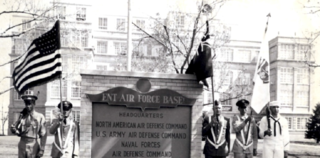 W
WContinental Air Defense Command (CONAD) was a Unified Combatant Command of the United States Department of Defense, tasked with air defense for the Continental United States. It comprised Army, Air Force, and Navy components. It included Army Project Nike missiles anti-aircraft defenses and USAF interceptors. The primary purpose of continental air defense during the CONAD period was to provide sufficient attack warning of a Soviet bomber air raid to ensure Strategic Air Command could launch a counterattack without being destroyed. CONAD controlled nuclear air defense weapons such as the 10 kiloton W-40 nuclear warhead on the CIM-10B BOMARC. The command was disestablished in 1975, and Aerospace Defense Command became the major U.S. component of North American Air Defense Command (NORAD).
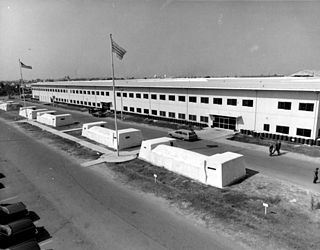 W
WThe Defense Attaché Office, Saigon was a joint-service command and military attaché branch of the United States Department of Defense (DOD) under the control of United States Support Activities Group (USSAG). It assumed all DOD responsibilities in South Vietnam following the disestablishment of Military Assistance Command, Vietnam (MACV) in March 1973. The DAO was responsible for administering military assistance and support to the South Vietnamese armed forces, the gathering and distribution of military intelligence and the performance of normal Defense Attaché functions. The DAO remained in existence until August 1975.
 W
WThe I Corps Tactical Zone was a corps of the Army of the Republic of Vietnam (ARVN), the army of the nation state of South Vietnam that existed from 1955 to 1975. It was one of four corps of the ARVN. This was the northernmost region of South Vietnam, bordering North Vietnam at the Vietnamese Demilitarized Zone (DMZ). These five provinces are Quảng Trị Province,, Thừa Thiên-Huế Province,, Quảng Nam Province,, Quảng Tín Province, and Quảng Ngãi Province,.
 W
WThe II Corps was a corps of the Army of the Republic of Vietnam (ARVN), the army of the nation state of South Vietnam that existed from 1955 to 1975. It was one of four corps in the ARVN, and it oversaw the region of the central highlands region, north of the capital Saigon. Its corps headquarters was in the mountain town of Pleiku.
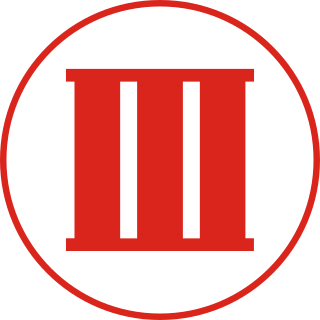 W
WIII Corps was a corps of the Army of the Republic of Vietnam (ARVN), the army of the nation state of South Vietnam that existed from 1955 to 1975. It was one of four corps in the ARVN, and oversaw the region of the country surrounding the capital Saigon.
 W
WThe IV Corps was a corps of the Army of the Republic of Vietnam (ARVN), the army of the nation state of South Vietnam that existed from 1955 to 1975. It was one of four corps in the ARVN, and it oversaw the Mekong Delta region of the country.
 W
WThe Joint General Staff (JGS) was a body of senior uniformed leaders in the South Vietnamese military which advised the Ministry of National Defence and the President of South Vietnam.
 W
WThe Khmer Air Force, commonly known by its americanized acronym KAF was the air force component of the Khmer National Armed Forces (FANK), the official military of the Khmer Republic during the Cambodian Civil War between 1970 and 1975.
 W
WThe Khmer National Armed Forces were the official armed defense forces of the Khmer Republic, a short-lived state that existed from 1970 to 1975, known today as Cambodia. The FANK was the successor of the Royal Khmer Armed Forces which had been responsible for the defense of the previous Kingdom of Cambodia since its independence in 1954 from France.
 W
WThe Khmer National Army, commonly known as the "Cambodian Army", was the Land Component of the Khmer National Armed Forces (FANK), the official military of the Khmer Republic during the Cambodian Civil War between 1970 and 1975.
 W
WThe Khmer National Navy, was the naval component of the Khmer National Armed Forces (FANK), the official military of the Khmer Republic during the Cambodian Civil War between 1970 and 1975.
 W
WThe People's Self-Defense Force was a South Vietnamese part-time village level militia during the Vietnam War. The People's Self-Defense Force mainly protected homes and villages from attacks by the Viet Cong (VC) and the People's Army of Vietnam (PAVN).
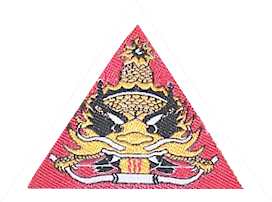 W
WThe Presidential Guard was a military unit of the Army of the Republic of Vietnam (ARVN) that was assigned to personally protect the President of the Republic of Vietnam, the nation-state that existed from 1955 to 1975. This force formed the bulwark of defences against continual coups, preventing previous coups against Ngo Dinh Diem, and would be maintained to prevent further coups in the wake of political instability following it.
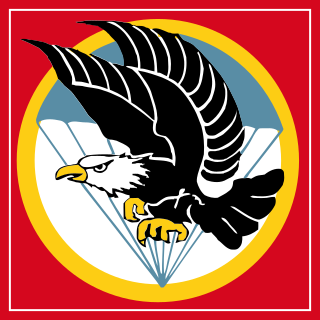 W
WThe Vietnamese Airborne Division(Binh chủng Nhảy dù Việt Nam Cộng hòa) was one of the earliest components of the Republic of Vietnam Military Forces. The Vietnamese Airborne Division began as companies organized in 1948, prior to any agreement over armed forces in Vietnam. After the partition of Vietnam, it became a part of the Army of the Republic of Vietnam. This division had its distinct origins in French-trained paratrooper battalions, with predecessor battalions participating in major battles including Dien Bien Phu and retained distinct uniforms and regalia. With the formation of an independent republic, the colonial paratroopers were dissolved, however regalia and aesthetics alongside the nickname "Bawouans" would be retained.
 W
WThe Republic of Vietnam Marine Division was part of the armed forces of South Vietnam. It was established by Ngo Dinh Diem in 1954 when he was Prime Minister of the State of Vietnam, which became the Republic of Vietnam in 1955. The longest-serving commander was Lieutenant General Le Nguyen Khang. In 1969, the VNMC had a strength of 9,300, 15,000 by 1973., and 20,000 by 1975.
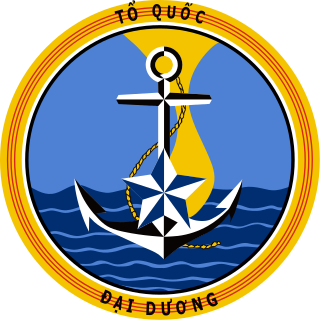 W
WThe Republic of Vietnam Navy was the naval branch of the South Vietnamese military, the official armed forces of the former Republic of Vietnam from 1955 to 1975. The early fleet consisted of boats from France. After 1955 and the transfer of the armed forces to Vietnamese control, the fleet was supplied from the United States. With assistance from the U.S., the VNN became the largest Southeast Asian navy, with 42,000 personnel, 672 amphibious ships and craft, 20 mine warfare vessels, 450 patrol craft, 56 service craft, and 242 junks.
 W
WThe Republic of Vietnam Military Forces, were the official armed defense forces of the defunct Republic of Vietnam and was responsible for the defense of the state since its independence from France in October 1955 to its demise in April 1975.
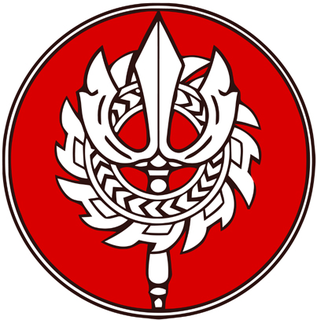 W
WThe Royal Lao Armed Forces, best known by its French acronym FAR, were the official armed defense forces of the Kingdom of Laos, a state that existed from 1949 to 1975 in what is now the Lao People's Democratic Republic. The FAR was responsible for the defense of the Kingdom since its independence in October 1953 from France.
 W
WThe Royal Lao Army, also designated by its anglicized title RLA, was the Land Component of the Royal Lao Armed Forces (FAR), the official military of the Kingdom of Laos during the North Vietnamese invasion of Laos and the Laotian Civil War between 1960 and 1975.
 W
WThe Royal Lao Navy was the naval component of the Royal Lao Armed Forces (FAR), the official military of the Royal Lao Government and the Kingdom of Laos during the Laotian Civil War between 1960 and 1975.
 W
WThe South Vietnam Air Force, officially the Republic of Vietnam Air Force was the aerial branch of the Republic of Vietnam Military Forces, the official military of the Republic of Vietnam from 1955 to 1975.
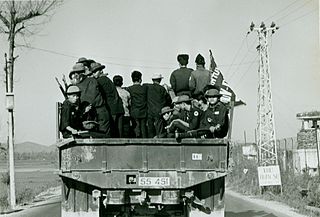 W
WThe South Vietnamese Popular Force was a part-time local militia of the Army of the Republic of Vietnam (ARVN) during the Vietnam War. The South Vietnamese Popular Force mainly protected homes and villages in South Vietnam from attacks by the Viet Cong (VC) and later the People's Army of Vietnam (PAVN).
 W
WThe South Vietnamese Regional Forces were a component of Army of the Republic of Vietnam (ARVN) territorial forces. Recruited locally they served as full-time province-level defence forces. In 1964, the Regional Forces were integrated into the ARVN and placed under the command of the Joint General Staff.
 W
WRoyal Air Force Spitalgate or more simply RAF Spitalgate formerly known as RFC Grantham and RAF Grantham was a Royal Flying Corps and Royal Air Force station, located 2 mi (3.2 km) south east of the centre of Grantham, Lincolnshire, England fronting onto the main A52 road.
 W
WThe Vietnamese Rangers, properly known in Vietnamese as the Biệt Động Quân (En:Commando) and commonly known as the ARVN Rangers, were the light infantry of the Army of the Republic of Vietnam. Trained and assisted by American Special Forces and Ranger advisers, the Vietnamese Rangers infiltrated beyond enemy lines in search and destroy missions. Initially trained as a counter-insurgency light infantry force by removing the fourth company each of the existing infantry battalions, they later expanded into a swing force capable of conventional as well as counter-insurgency operations, and were relied on to retake captured regions. Later during Vietnamization the Civilian Irregular Defense Group program was transferred from MACV and integrated as Border Battalions responsible for manning remote outposts in the Central Highlands.